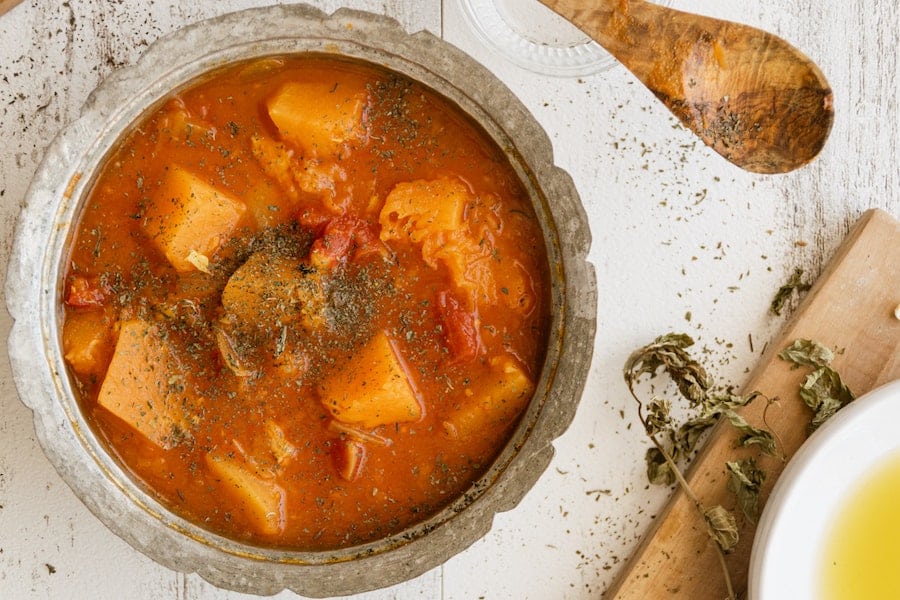
As the crisp air of fall approaches, it’s the perfect time to embrace seasonal produce to nourish your family’s health. There are a variety of delicious and nutritious foods that can be part of your family’s meals. Here are some tips to keep your family healthy during this season:
Seasonal Produce
Some seasonal favorites to incorporate into your meals:
Apples
Enjoy a family outing to an orchard for apple picking and use the fresh harvest in snacks, salads, and desserts. One apple provides over 4 grams of fiber and 8.4 mg of vitamin C.
Squash
Experiment with different types of squash like butternut, acorn, and spaghetti squash. Roast them, use them in soups, or stuff them for a hearty meal. One cup of butternut squash provides 82 calories, 7 grams of fiber and is an excellent source of vitamin A & C. It’s also a good source of vitamin E, B1, B3, B6, folate, magnesium, potassium & manganese. It’s also a source of the antioxidants beta-carotene, beta-cryptoxanthin and alpha-carotene.
Sweet Potatoes
Sweet potatoes can be mashed, roasted, or turned into oven-baked or air-fried fries. One cup provides 6.6 grams of fiber; an excellent source of beta-carotene, vitamin C, manganese, copper, B5, B6; and a good source of biotin, potassium, B1, B2, B3 and phosphorous. They are also high in anthocyanin which has anti-inflammatory benefits.
Brussels Sprouts
Roast these mini cabbages with a drizzle of olive oil for a delicious side dish full of antioxidants. One cup of Brussels sprouts provides 56 calories, 4.6gms fiber (15 percent of daily value), an excellent source of Bitamin C & K (>100 percent daily value), very good source of folate, B6, manganese, choline, copper, B1, phosphorus, omega 3 fats, potassium (11-25 percent of daily value), good source of iron, B2, B5, magnesium, Vitamin A, B3, calcium, zinc (5-10 percent of daily value). They also contain a high amount of the phytonutrient glucosinolate which is cancer protective.
Pumpkin
One cup of pumpkin provides 137 calories, 7 grams of fiber; is an excellent source of Vitamin A, K, E, and copper, a good source of Vitamin C, magnesium, iron, B2, B6 and potassium. Pumpkins are also a great source of the powerful antioxidants alpha and beta-carotene! Add pumpkin puree to soup or chili to give it a unique creaminess, cube and roast with other vegetables; mix with broth and parmesan cheese and pour over pasta with veggies, blend with chickpeas to make a hummus.
Nutrient-Dense Comfort Foods
Fall is the perfect time to savor comforting meals that are also nutrient-dense versions of your family’s favorite comfort foods:
Soups and Stews
Create hearty soups and stews loaded with vegetables, lean proteins, and whole grains. They’re warm, filling, and perfect for family dinners.
Whole Grains
Swap refined grains for whole grains like quinoa, brown rice, buckwheat, and whole wheat pasta in your family’s dishes.
Lean Proteins
Incorporate lean protein sources such as poultry, fish, beans, and lentils into your meals to provide sustained energy.
Healthy Fats
Include sources of healthy fats like avocados, nuts, seeds, and olive oil to support brain health and overall well-being.
Get Creative with Fall Flavors
Fall spices and flavors add a delightful twist to your family’s meals. Experiment with these seasonal ingredients:
Cinnamon and Nutmeg
Sprinkle these spices on oatmeal, yogurt, and even roasted vegetables for a warm and comforting flavor.
Pumpkin Spice
Incorporate pumpkin spice into smoothies, lattes, and baked goods for that quintessential fall taste.
Maple Syrup
Use a touch of natural maple syrup as a sweetener in recipes, such as drizzling it over pancakes, yogurt or mixing it into dressings.
Involve the Whole Family
Making healthy eating a family affair can be both fun and educational. Get everyone involved in planning, preparing, and enjoying nutritious meals together:
Meal Planning
Sit down as a family to plan the week’s meals, incorporating everyone’s preferences and ensuring a balanced variety.
Cooking Together
Assign age-appropriate tasks to each family member during meal preparation. This fosters teamwork and when children are involved in meal preparation they are more inclined to eat the meal.
Grocery Shopping
Take the family to local farmers’ markets or grocery stores and involve children in selecting fresh produce and ingredients.
Food Education
Teach your family about the nutritional benefits of different foods and encourage them to ask questions about what they’re eating.
Try these fall recipes!
CELEBRATE FALL BY PRIORITIZING YOUR NUTRITION
TAKE ADVANTAGE OF YOUR PREVENTATIVE HEALTH INSURANCE BENEFITS & MAKE AN APPOINTMENT WITH ME
A registered dietitian provides medical nutrition therapy and is your best source of reliable and evidence-based nutrition information. An RDN can also help you determine measurable and achievable goals within your individualized plan for your best health outcomes.
BONUS: Services are covered by most health insurance plans!



